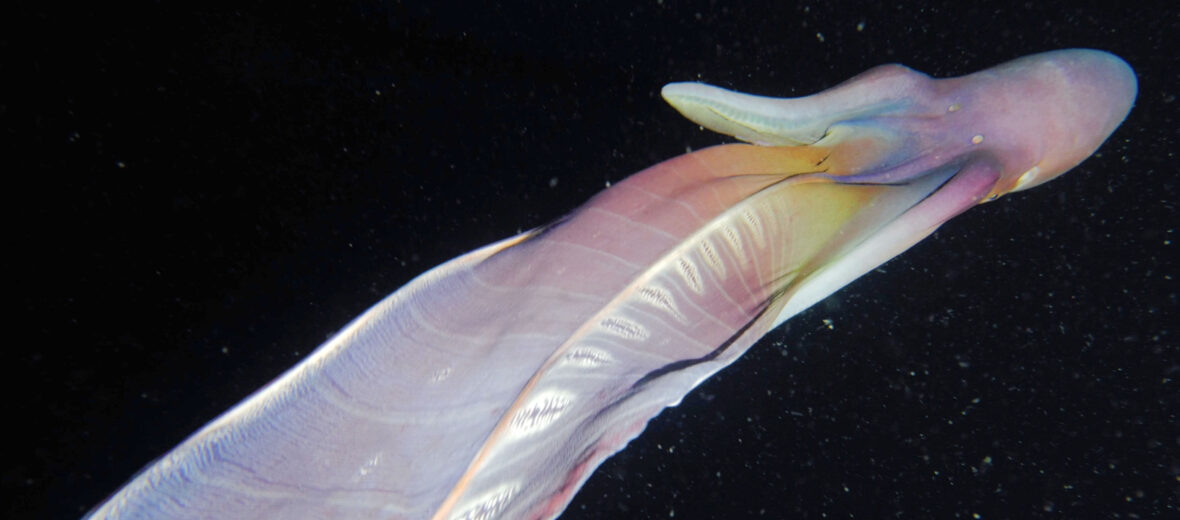
The blanket octopus is as strange as it is beautiful. With a large drapery spanning between their arms, a secret weapon (borrowed from another animal), a massive size difference between males and females, and an ultra secretive lifestyle. This oceanic wanderer comes to you, on special request, from my friend Ryan.
First the Stats…
Scientific name: Tremoctopus
Length: Up to 6 feet
Lifespan: Unknown
Now on to the Facts!
1.) When threatened, they extend their amazing tarp-like flesh out in a 70s looking stylish fan.
2.) These cephalopods spend their entire lives in the open ocean.
3.) Female blanket octopuses are huge, at over 6 feet long and several feet wide! Males… well, they look like a wee baby octopus, measuring up to the size of a human’s thumb tip!
4.) The male dispenses with the romance when he finds a female. He simply rips off his own arm, which is filled with sperm, and sticks it to her. She then holds on the the arm till she’s ready to use the sperm to fertilize her eggs and the male, well, he dies shortly after. A lot of guys have said, in the past, that they would die for their lady. But these fellas indeed do just that.
5.) After the birth of her 10,000 eggs, the female dies shortly after too. Kind of sad really.
But wait, there’s more on the blanket octopus!
6.) These creatures are the most sexually dimorphic animal known in the world. This is because females are so large and males are so tiny. They also don’t look anything alike.
7.) There are 4 known species of these octopuses: Tremoctopus violaceus, Tremoctopus gracilis, Tremoctopus gelatus, and Tremoctopus robsoni.
Did you know…?
When the female comes across a portuguese man-o-war jellyfish, she will approach it and rip off a tentacle or 2 and use their stinging nematocysts as self defense. Like a stinging whip!
8.) Like other octopuses, they can also release ink.
Now a Short Blanket Octopus Video!
Also, check out the Critter Science YouTube channel. Videos added frequently!
Want to suggest a critter for me to write about? Let me know here.



